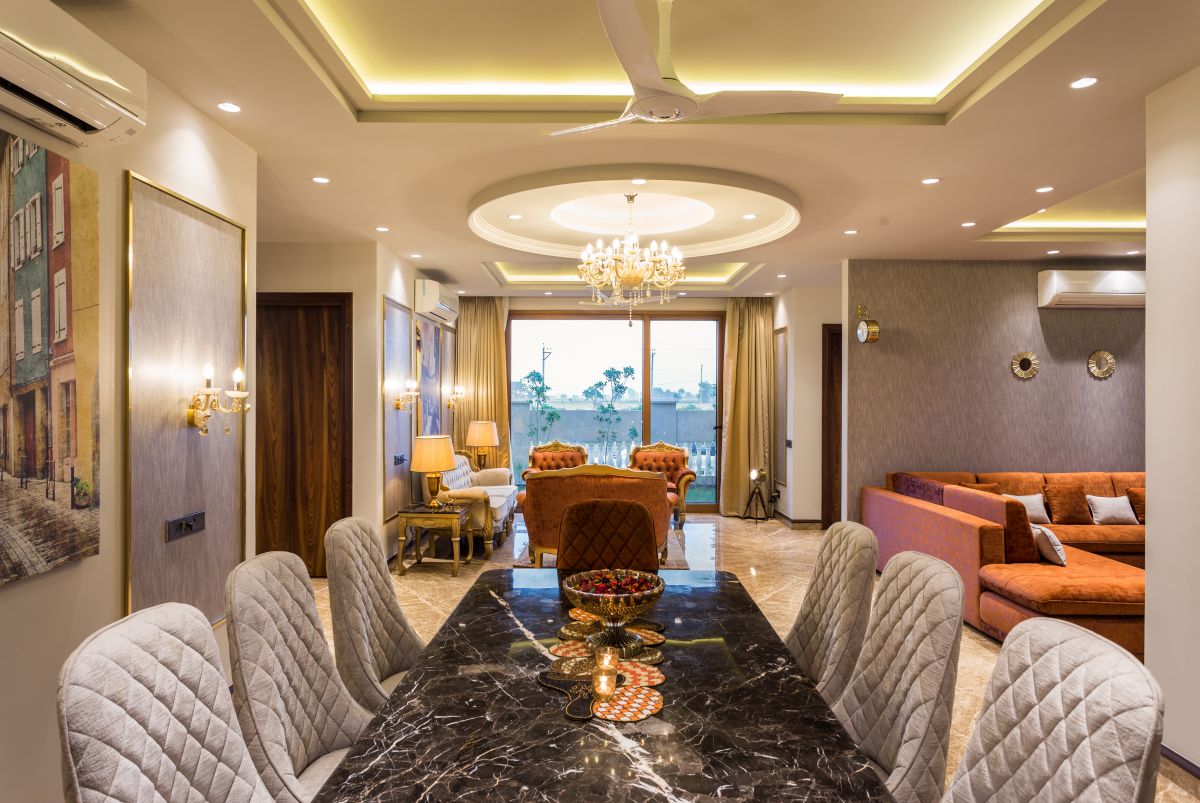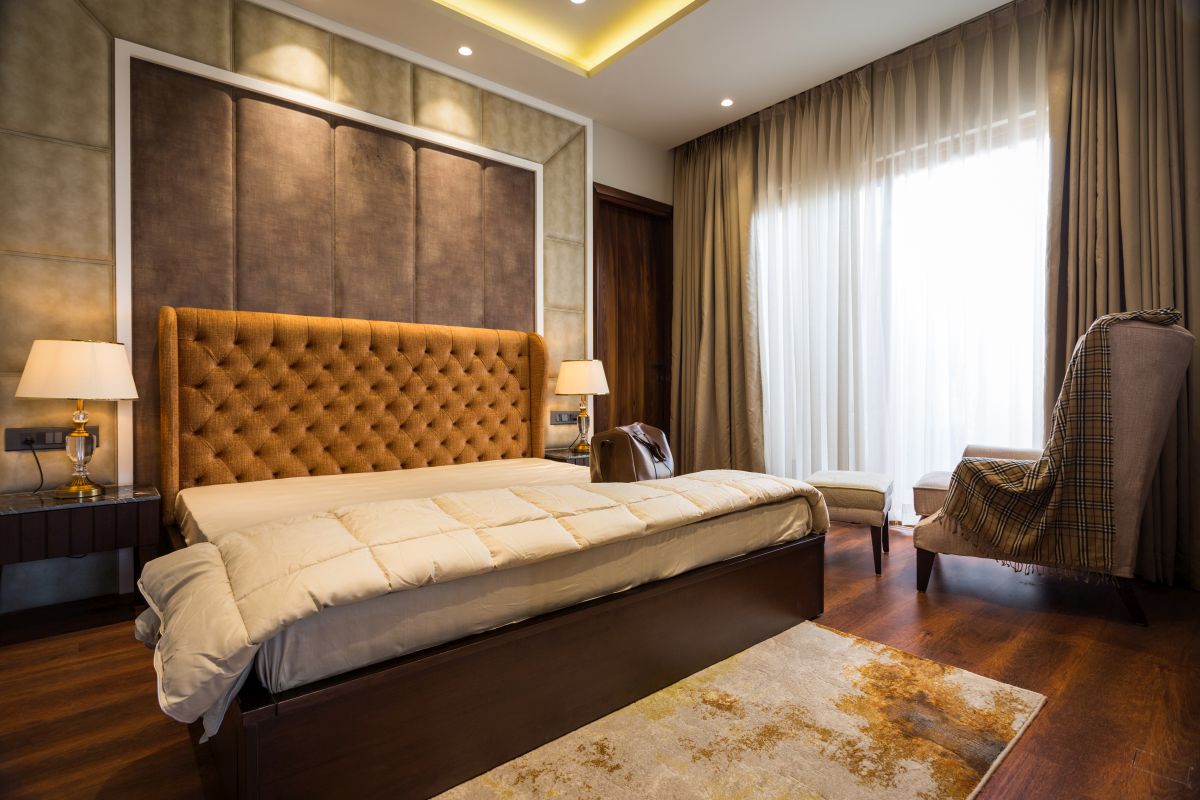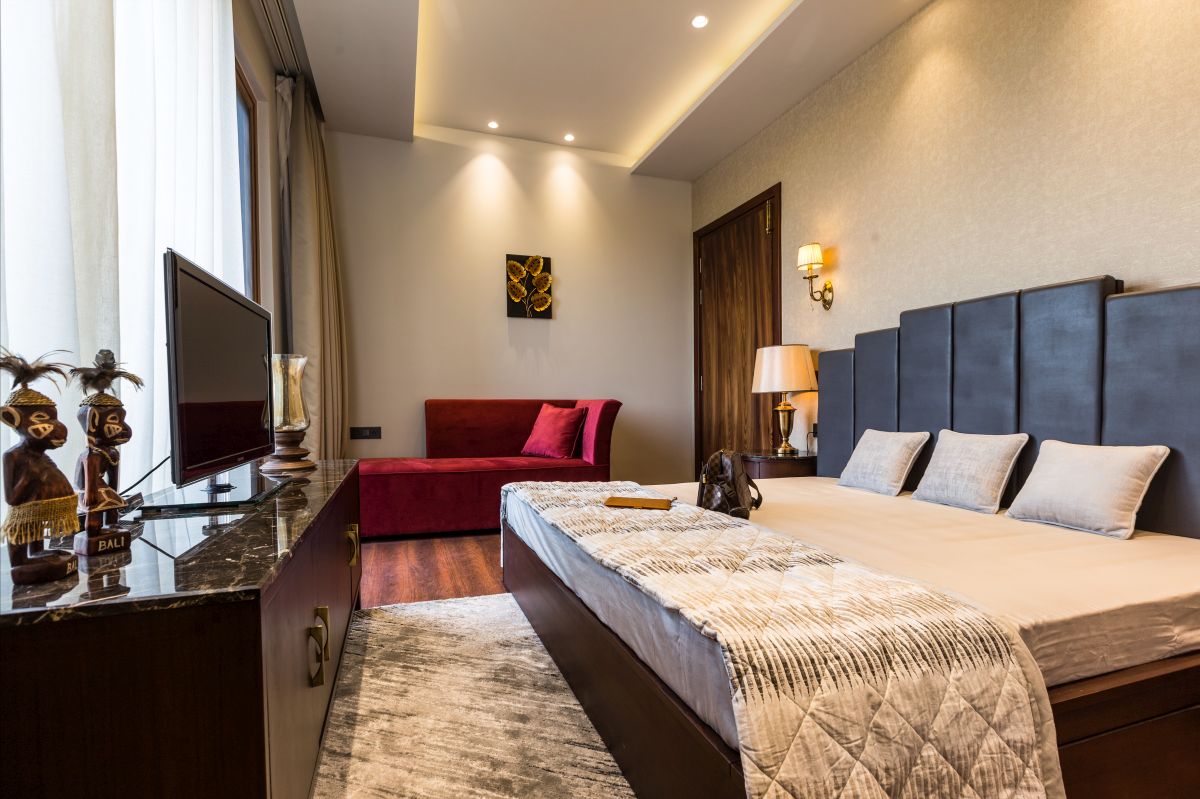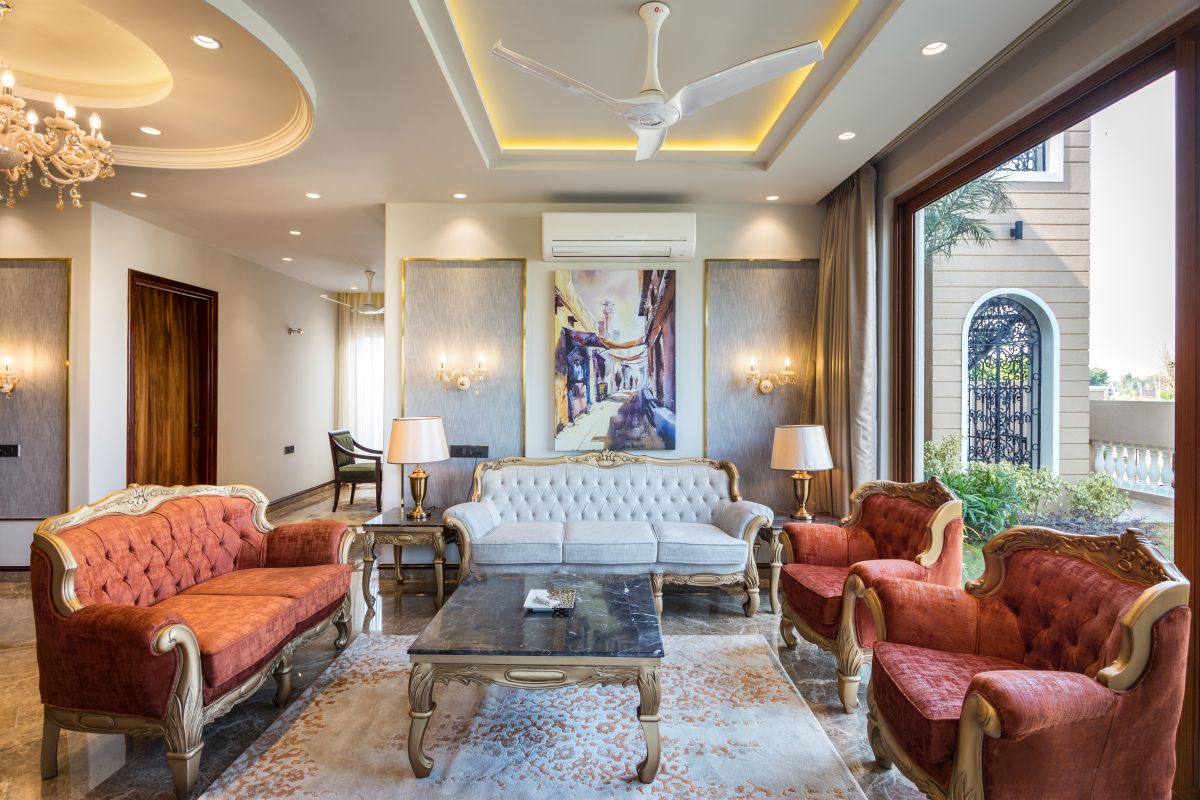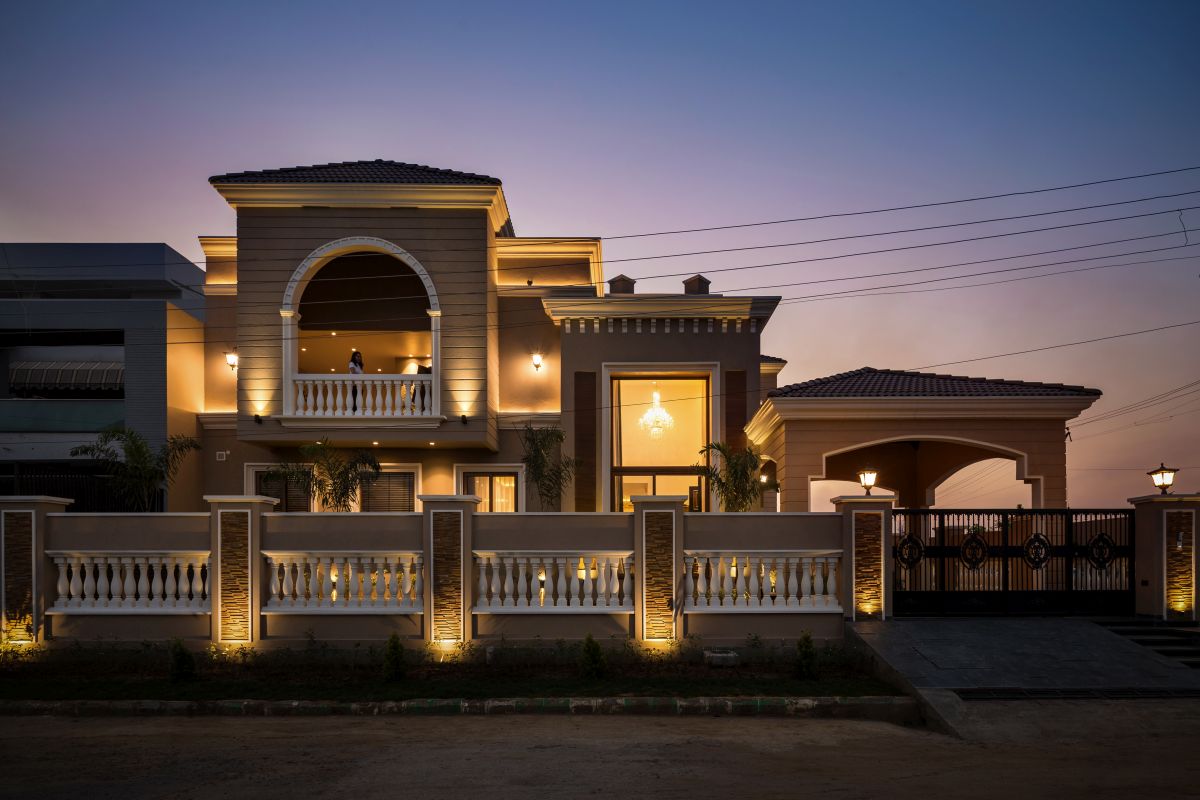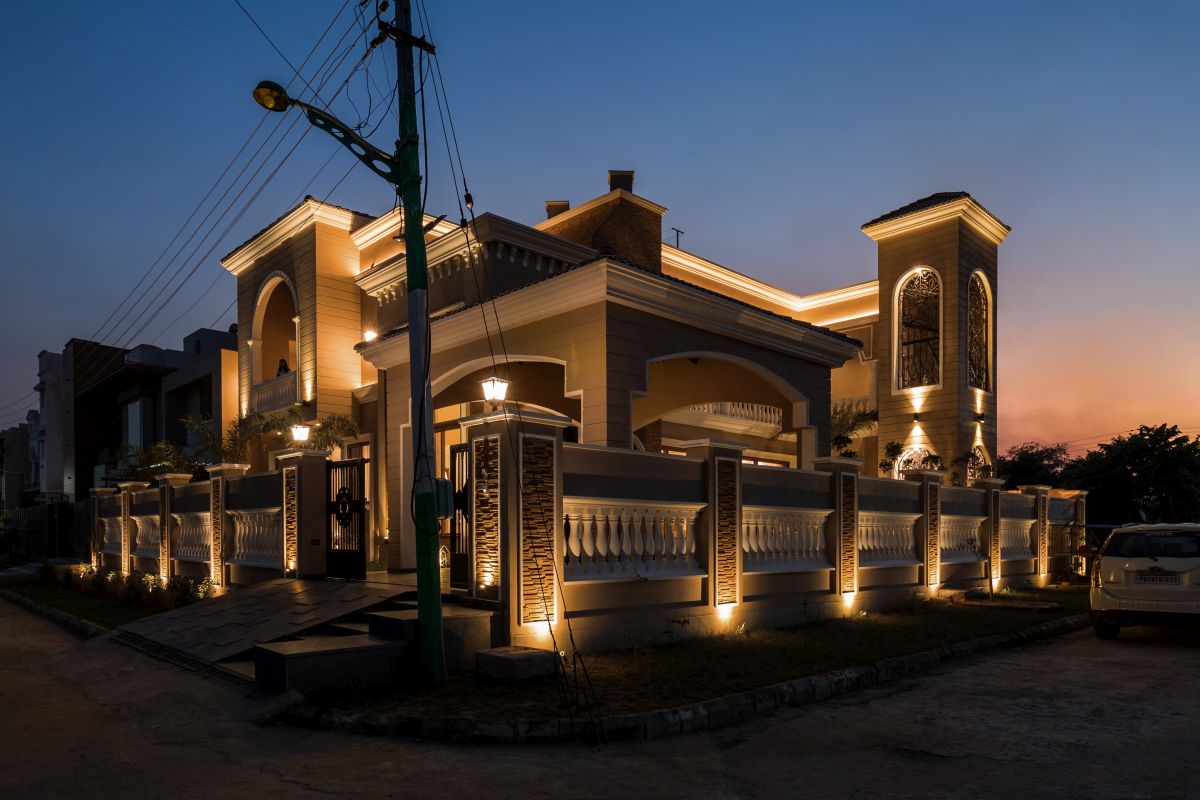An ideal combination of traditional aesthetical features and modern space planning techniques, architectural studio Space Race Architects designed a two-story bespoke dwelling for a nuclear family. Located in the small town of Jalandhar, the Eternal house is situated on a 4700 sq. ft. (444 Sq.m) parcel of land. After living in different parts of the country, the clients decided to build their permanent residence close to their native place where they can age peacefully. The house, has been strategically designed for a business family that spends ample time at home in the evenings.
Architect’s design has incorporated indigenous local crafting techniques with modern space planning in this custom-made design. In the time where modernism has a stronghold on architecture, the architect’s vision was to encompass rich Indian heritage into the design; low maintenance costs with user-friendliness and privacy were also on the list of priorities. Generous vistas of the picturesque green areas left around the dwelling add to the charm of the house.
Ornamentation is an essential part of Indian heritage that is seen in the light features throughout the house, which further adds to the beauty of the façade. Architect’s eye for small details is evident in the classical jali & railing detailing which rightly depict, the Indian traditionality. “One of the challenges in the design was to create something which stands out different in the whole housing estate,” said the Space Race Architects in its project description. The client’s requirement did not compromise with the naturality in the use of material and color tones, which would rightly go with the green cover designed around the dwelling.
Each space in the house bears a distinctive function. The central volume houses an open plan kitchen, dining area and family sitting. Glass facades offer a substantial connection to the scenic courtyard landscape, and eminently creates a close inside-outside relationship. Bringing fresh air and natural daylight inside the house are the two evident factors that make the insidecomfortable. The specialist in-house team at Space Race Architects sincerely works on these minute but significant features that make the house a ‘home’.
The entryway deliberately draws attention to the magnificent classical lighting and furniture range which is specially customized for this house. Bedrooms with en-suite, formal sitting areas, family lounge, dining, powder room, study, and balconies constitute the primary category of spaces of the residence.The sitting area with soft yet dynamic furniture is not only cozy to perch but also to see. The subtle artwork on the main wall enhances the space for a welcoming and relaxed atmosphere overlooking the house landscapes. The floor to ceiling windows floods in abundant natural light. The clearly defined zones are easy to perceive, while the traditional design features with fluid space planning all around soothe the senses. This keeps up with the very purpose of the home, which is to facilitate comfort and relaxation.
The kitchen layout stands well on the principle of the working triangle. Access to the kitchen from different zones of the house portrays the right sense of functionality and aptly depicts the unmatched fluidity within the spaces. The browns and whites in the kitchen present steady minimalism while the contemporary glossy units neutralize it and give a balanced, traditional image to the culinary area. Lastly, the free-flowing staircase in the center is a catchy, sculptural element in the house that characterizes grandeur and creates massive volumes. The wood finish in the stairwell is inspired by its richness and antiquity, which doesn’t fail to set up a great impression. All the standard-sized bedrooms, are naturally lit throughout the day due to the provision of floor to ceiling windows which immensely optimize the essential natural light.The spacious balconies are a perfect spot to catch the sunrise and sunsets.It is a great place to enjoy a cup of tea in the mornings or a glass of wine in the evening.
Fact File –
Name of the Firm: Space Race Architects
Project Year: 2018
Built Up Area: 5420 Sq. Feet = 503.5 Sq. m
Location: Jalandhar, Punjab, India
Specialist Manufacturers: Grohe, Monier, Sirca, Green, Toto, D Decor
Principal Architect: Ar. Thakur Udayveer Singh
Specialist Design Team: Ritika Singh
Content Credits: Pappal Suneja
Photography credits: Purnesh Dev Nikhanj
About Writer
Pappal Suneja is a Design Researcher and an architect based in Germany. He is Country Editor for World Architecture Community as well as an international correspondent for ADA Magazine. Pappal is the founder & Curator of Architectural Journalism & Criticism Organisation and currently pursuing his research at Stiftung Bauhaus, Germany.


